Head Cheese (European Meat Jelly)
on Apr 14, 2022
This post may contain affiliate links. Please read my disclosure policy.
The name says it all! If you’re not familiar with Head Cheese, you’re about to be! It’s a European meat jelly made with the head of a pig or calf. However, despite its name – it resembles more of a large sausage or cold-cut terrine. Plus, it contains no dairy at all!
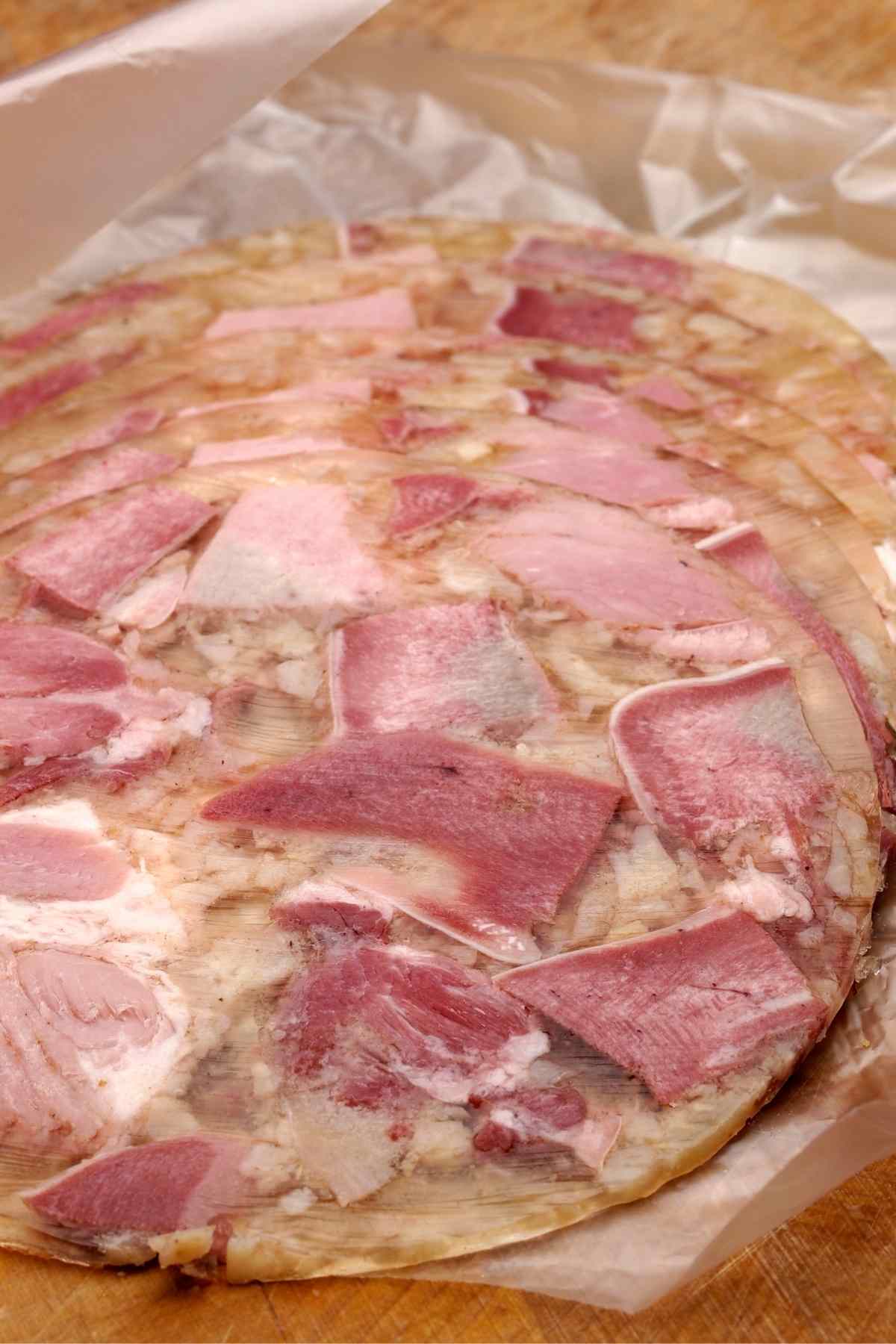
And if you’re looking for a tasty treat, head cheese tastes great, chilled like pâté or on a sandwich. After learning more about it, you’ll be able to know what it tastes like and how to eat it.
What Is Head Cheese?
Despite its name, there isn’t any cheese at all in head cheese. It is simply jellied meat made from hog head or a calf, and sometimes a cow or sheep’s head. The fun doesn’t stop there, this treat also uses the trimmings from the jowls and tongue and occasionally the heart or feet too.
Formed into the shape of a sausage, head cheese is served sliced and cold. Alternatively, you can make it in a mold or a pan to serve as terrine. Make note that it is chilled in order to prevent the gelatin from melting.
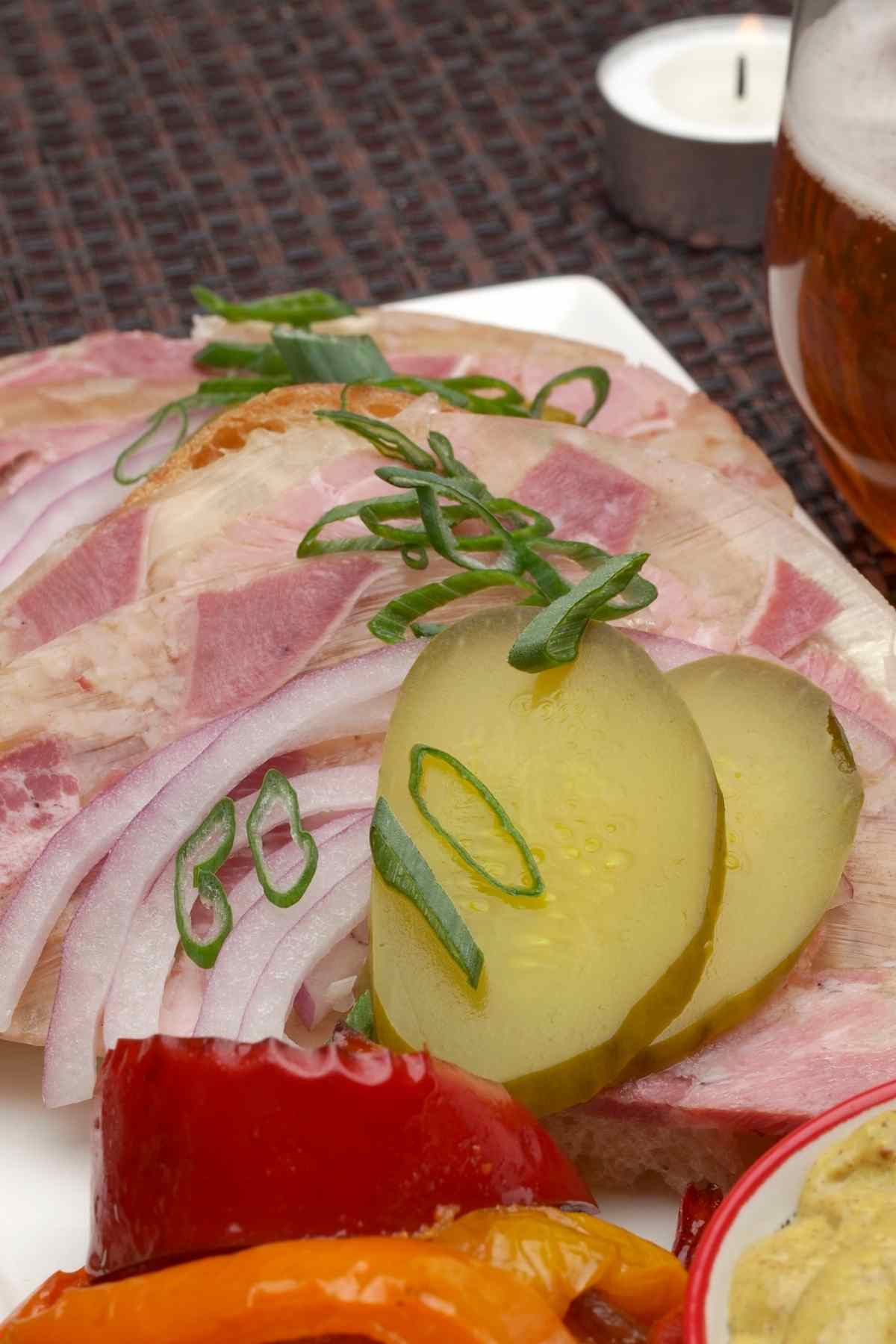
What Is In Head Cheese?
There are different varieties of head cheese that are made up of different ingredients. Here are some of the more popular recipes::
- Regular head cheese – uses pork head meat and can also include the jowls, skin, snout, feet, and gelatin.
- Tongue head cheese – made mainly with tongue and then uses salt and nitrite to cure it and produce a pink color.
- Blood head cheese – uses blood to create a darker-colored head cheese.
- Sulz – an original European recipe that uses bone-in pig’s feet in aspic, being most popular in Eastern Europe.
- Souse – Used in Australia, the name is said to describe that head cheese is made with vinegar.
Ingredients also can vary by culture and region. For instance, in Louisiana, head cheese is flavored with both vinegar and hot sauce. Whereas the Pennsylvania Dutch will add pig’s feet, vinegar and tongue as well.
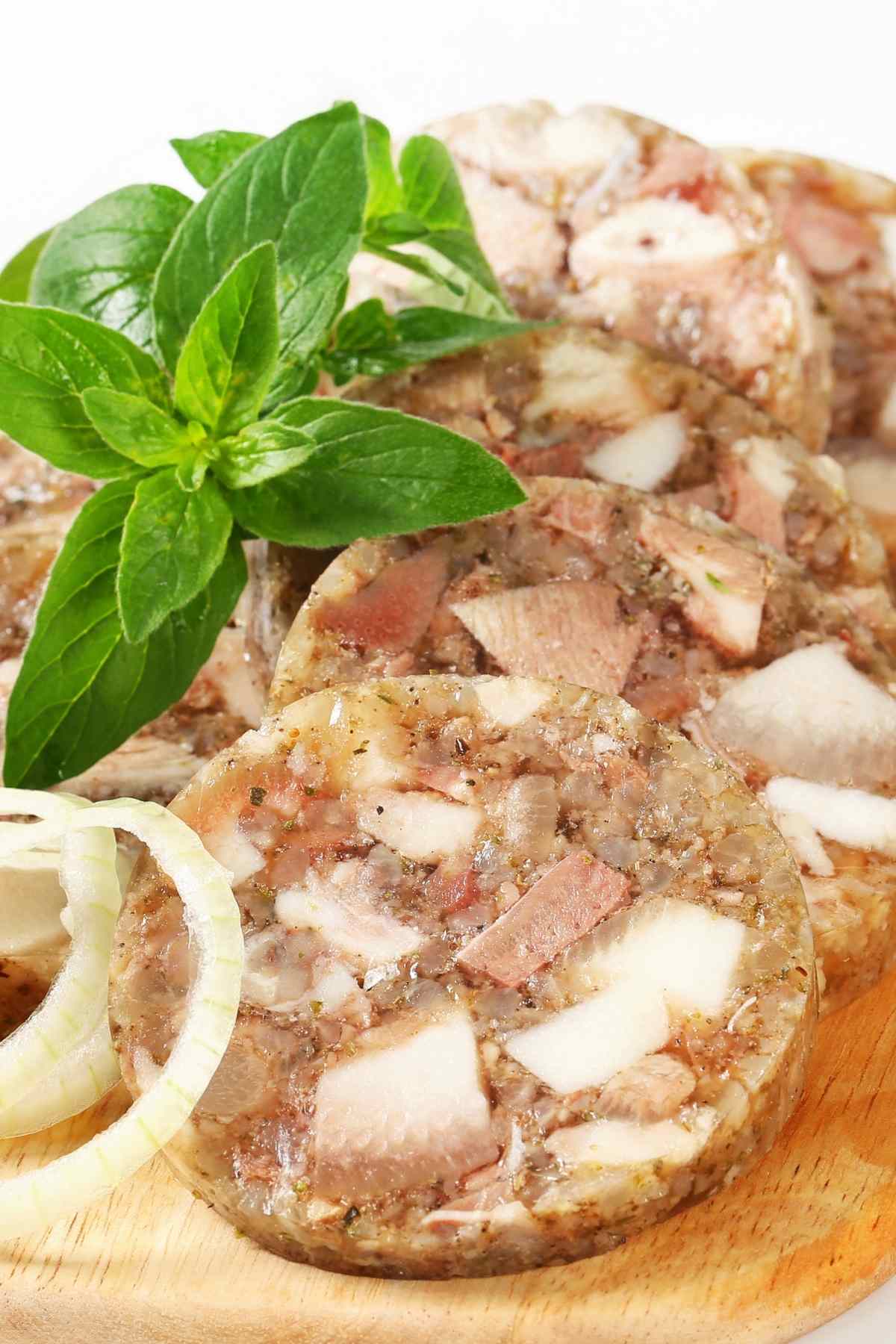
How to Make Hog Head Cheese
It goes without question that making head cheese can take a lot of work!
Put that knife down! No, don’t worry. You’re not going to be asked to kill something yourself. A lot of people don’t realize that in order for a head (or any animal, for that matter) to be used for cooking, the head needs to be thoroughly prepared.
In fact, the cook is usually washing and scraping off the hair from the freshly slaughtered head. The head is then split or quartered and the eyes are removed and often discarded. The ears are also removed and the wax cleaned out of the ear canals.
Slow, low and steady wins the race! In order to make head cheese, it’s important to simmer the meat in water between the boiling and simmering points for two to three hours. During that time, cover the meat with about two to three inches of water.
The skins should be boiled until soft but still in one piece and removed from the broth when still warm. Carefully remove any bones from the cooked meats and cool down. Cut the resulting skin into strips. Using a large colander, pour the broth through cheesecloth until it’s filtered perfectly clear. This is a small detail that can make all the difference.
Sometimes there are seasonings and vegetables mixed in. Then after it’s finished cooking, the head cheese needs to cool at room temperature for a few hours. Then it will be stuffed into a pig stomach or molded using a terrine dish.
Meat cuts like pork heads and skins have enough connective tissue that will produce the gelatin necessary to make the terrine.
Where Can I Buy Head Cheese?
You may be thinking by now, if head cheese is so tasty, why don’t you hear of people eating it more? Well, due to the manufacturing that goes into it, it can be a bit expensive – this in comparison to hotdogs or sausages that cost little to make and buy.
The place where you’ll have the best luck finding it is in European delis that cater to Central Europeans, Eastern Europeans and Italians.
How to Eat Head Cheese
There are a variety of ways to enjoy head cheese. Slice it up and add it to a sandwich, charcuterie platter or simply eat it as is.
You May Also Like

Homemade Head Cheese Recipe
Ingredients
- 1 pork head, split in half and soaked for 1-2 hours to remove blood
- Cold water, to cover
- Salt and pepper, to taste
- Seasonings, onions, garlic, thyme, cloves or mace, nutmeg, marjoram etc. (optional)
- 1-2 tablespoons vinegar, optional for sour taste
- Optional pig stomach
Instructions
- Prepare the meat: clean the hair of skin and remove excess fat; blanch tongues in hot water with outer layer removed; cut the heart in half and rinsed thoroughly.
- Add the trimmings to a large stock pot and cover with 1 to 2 inches of cold water.
- Place the pot over high heat and bring to a boil. Skim off any grey scum that appears on the surface using a skimmer or slotted spoon.
- Reduce heat to low and cover. Simmer for at least 2 to 3 hours or until the meat are soft. The broth will typically be cloudy and require clarification (below).
- Remove from heat. Using kitchen tongs, remove the meat and bones from the pot to a cutting board.
- Place a double-layered cheesecloth over a large bowl. Slowly pour the hot broth through the cheesecloth to remove the particulates. (It can be helpful to have a second person hold the cheesecloth in place.) When finished, clean the cheesecloth of debris and repeat several times more until the broth becomes clear.
- On the cutting board, separate the meat from the bones, removing the bones and any gristle as you go. It can be a picky job so take your time.
- Then chop the meat into ¼-inch or maximum ½-inch dice. Add to a medium mixing bowl along with the salt, pepper and optional seasonings.
- If you want to make it into a terrine, add the mixture to a terrine mold (the easiest option). For a sausage style, set the pig stomach onto a work surface (see below).
- Stuff the mold or stomach with the meat mixture to fill. Then carefully pour the lukewarm jelly-like meat broth to fill.
- Cover the casing with a board or similar weight to pack it out. For a terrine mold, use the lid or other weight.
- Cool to room temperature. Then gently move to the refrigerator to chill overnight to firm up completely. Use a sharp knife to slice and serve.
Notes
- Pig stomach: The stomach needs to first be cleaned. Reverse it and rinse thoroughly with water. Trim off excess fat. Then tie the small opening tightly with butcher twine. Fill the stomach with mixture and tie the other end with twine or a clamp.
- Cured meats: To get a pink color in the head cheese, you need to buy cured meat trimmings.
Nutrition information provided is an estimate only and will vary based on ingredient brands and cooking methods used.


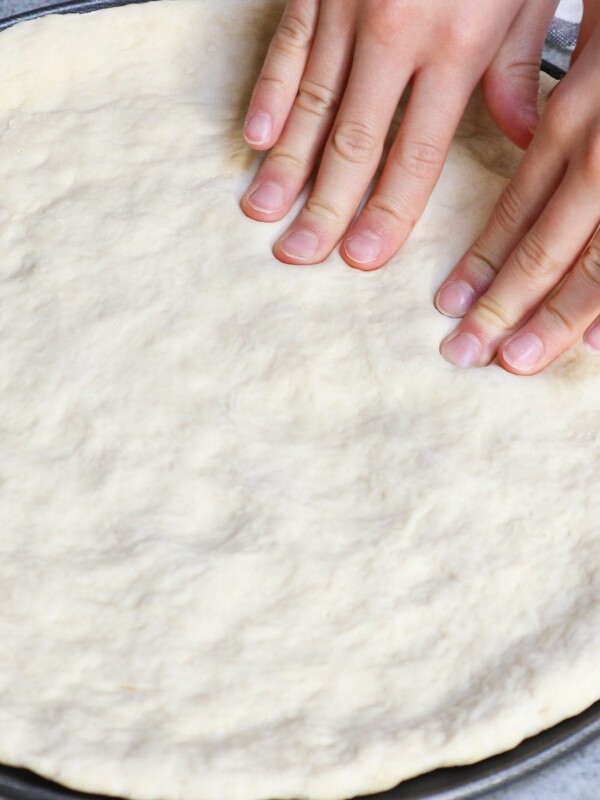
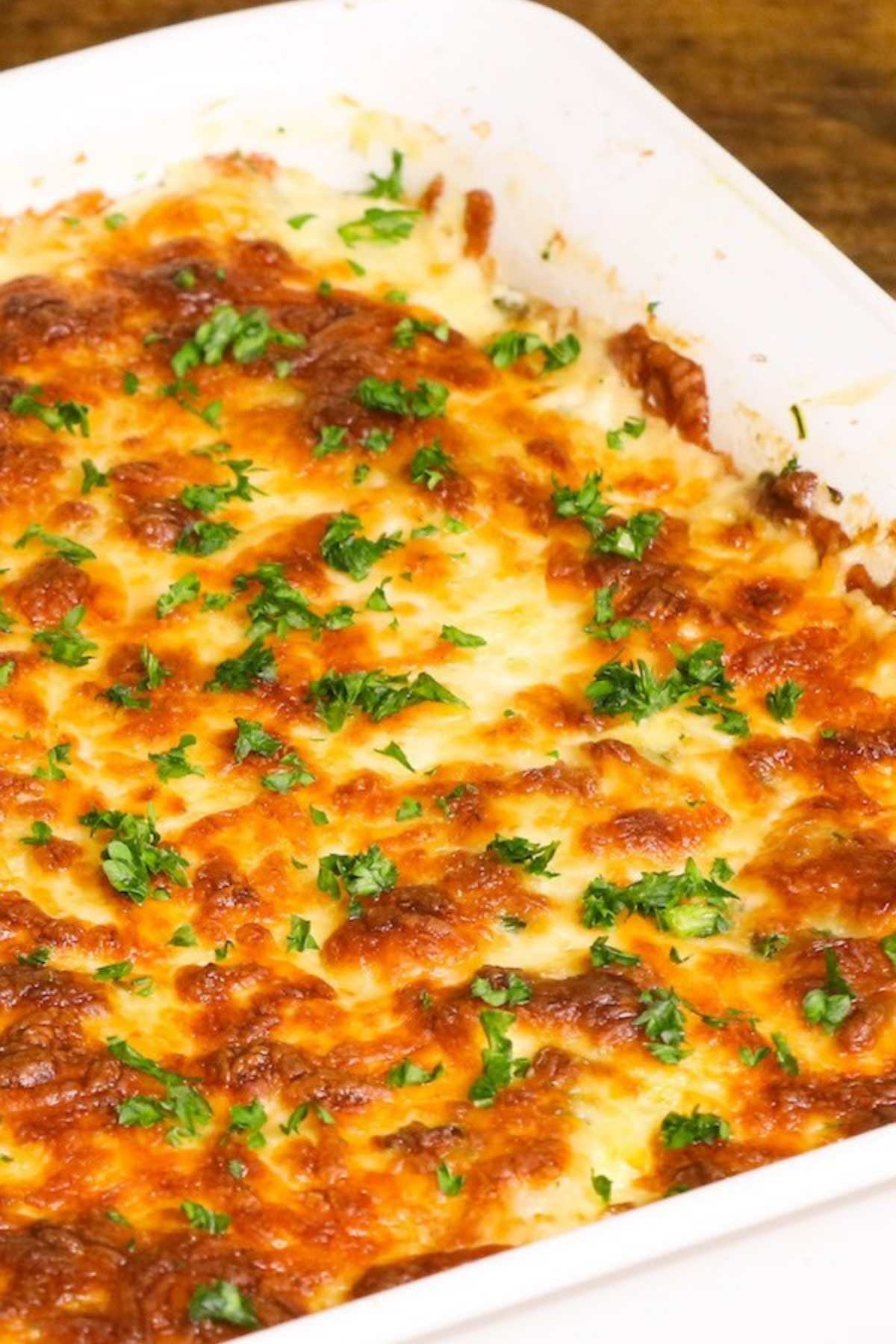
I love a good meat jelly. Thanks for the recipe.
-Allison